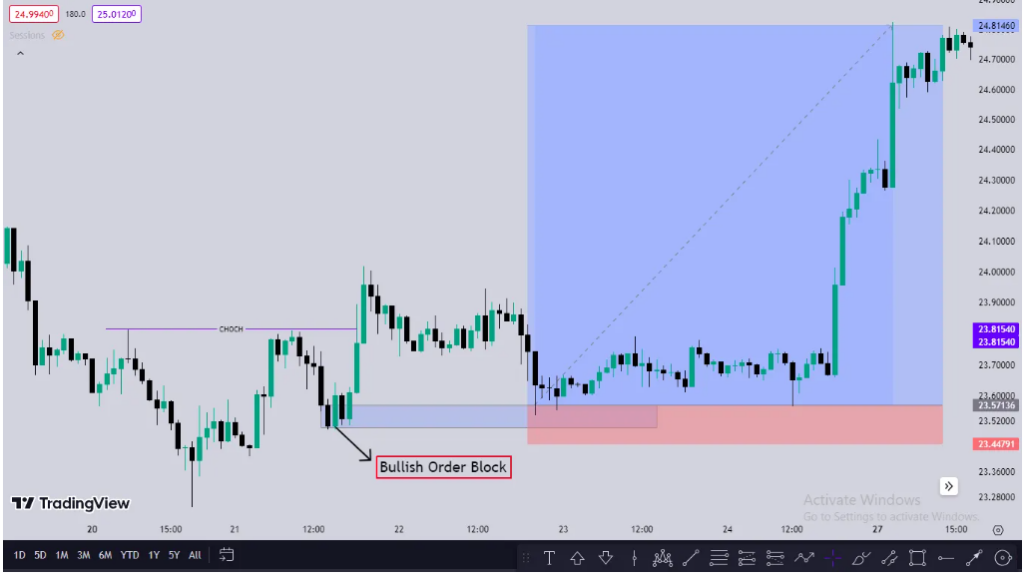Lecture 19: Creating a Personal SMC Playbook – Documenting Patterns & Adjustments Based on Data
A Smart Money Concepts (SMC) playbook is a personalized trading guide where you document everything about your strategy, setups, trade patterns, and key insights. This acts as a trader’s blueprint, ensuring consistency, clarity, and continuous improvement. Rather than relying on random trades, a playbook helps refine decision-making based on past data and real market behavior.
Why Every Trader Needs an SMC Playbook
- Consistency in Trading – Reduces emotional trading by providing a structured approach.
- Identifies High-Probability Setups – Focuses on what works best for your trading style.
- Speeds Up Decision-Making – You know exactly what to look for when analyzing charts.
- Eliminates Unnecessary Trades – Avoids impulsive decisions that don’t align with your strategy.
- Provides a Data-Driven Edge – Helps refine strategies based on historical results.
Step-by-Step Process to Building Your SMC Playbook
Step 1: Define Your Trading Style and Timeframe
Before creating your playbook, determine:
- Are you a scalper, day trader, or swing trader?
- Do you prefer the 1-minute, 15-minute, 1-hour, or daily timeframe?
- What markets do you trade (Forex, stocks, crypto, indices)?
Your playbook should be tailored to your specific trading style.
Step 2: Document Your Key SMC Trading Patterns
Write down exactly what trade setups you use. Each setup should include:
- Entry criteria (e.g., liquidity grab, order block, fair value gap confirmation).
- Stop loss placement (based on structure, and liquidity zones).
- Take profit targets (previous structure, imbalance fills).
📌 Example: Order Block Reversal Setup

- Entry: Price returns to a bullish order block after taking liquidity.
- Confirmation: Strong bullish rejection candle forms.
- Stop Loss: Below the order block wick.
- Take Profit: Next liquidity zone or fair value gap fill.
- Market Condition: Best used in trending markets.
Step 3: Create a Rules-Based Checklist
A checklist ensures that every trade meets strict conditions before execution.
Example: Order Block Trade Checklist
✅ Liquidity grab before price enters the order block
✅ Price forms bullish/bearish confirmation candle
✅ Favorable risk-to-reward ratio (at least 1:3)
✅ No major news events conflicting with trade
By following a strict checklist, you eliminate low-quality setups.
Step 4: Record Adjustments Based on Backtesting & Live Trades
- Keep a record of how your setups perform over time.
- Identify patterns where trades succeed or fail.
- Adjust your approach based on data (e.g., avoiding order blocks in low-volume sessions).
Example: After 50 backtested trades, I noticed that order blocks work better when paired with liquidity sweeps but fail when taken in a ranging market.
Step 5: Include Screenshots of Ideal and Failed Setups
A playbook isn’t just text—it should include screenshots of trades to visually reinforce learning.
- Mark up charts with entry zones, stop loss, and take profit areas.
- Compare winning trades vs. losing trades to identify common mistakes.
Step 6: Continuously Update and Improve
- Your playbook is a living document—it evolves as you gain experience.
- Refine setups, remove ineffective strategies, and add new insights.
- If a setup consistently fails in certain conditions, adjust or eliminate it.
Example of an SMC Playbook Entry
| Setup | Entry Conditions | Confirmation | Stop Loss | Take Profit | Notes |
| Order Block | Liquidity grab before price enters order block | Rejection candle with strong volume | Below order block wick | Next liquidity zone or fair value gap | Works best in trending markets |
| Fair Value Gap (FVG) | Price retraces to fill FVG | Volume spike with momentum | Below FVG zone | Next structural high/low | Avoid low-volume sessions |
Common Mistakes When Creating a Playbook
- Not tracking enough trades – A playbook is only effective if based on sufficient data.
- Ignoring losing trades – Studying losses helps refine the strategy.
- Overcomplicating setups – Keep it clear and simple for easy execution.
- Failing to update regularly – Market conditions change, so the playbook should evolve.
Final Thoughts
A well-documented SMC playbook transforms random trading into a structured, disciplined approach. By consistently refining your setups, tracking performance, and adapting based on data, you create an edge that aligns with how smart money moves in the market. This playbook will serve as your personal trading guide, ensuring that every trade is backed by logic, analysis, and tested strategies.
How useful was this article?
If you'd like more Smart Money tips, download the Price Action Cheat Sheet here.
To your success,
The Trading Strategy Guides Team